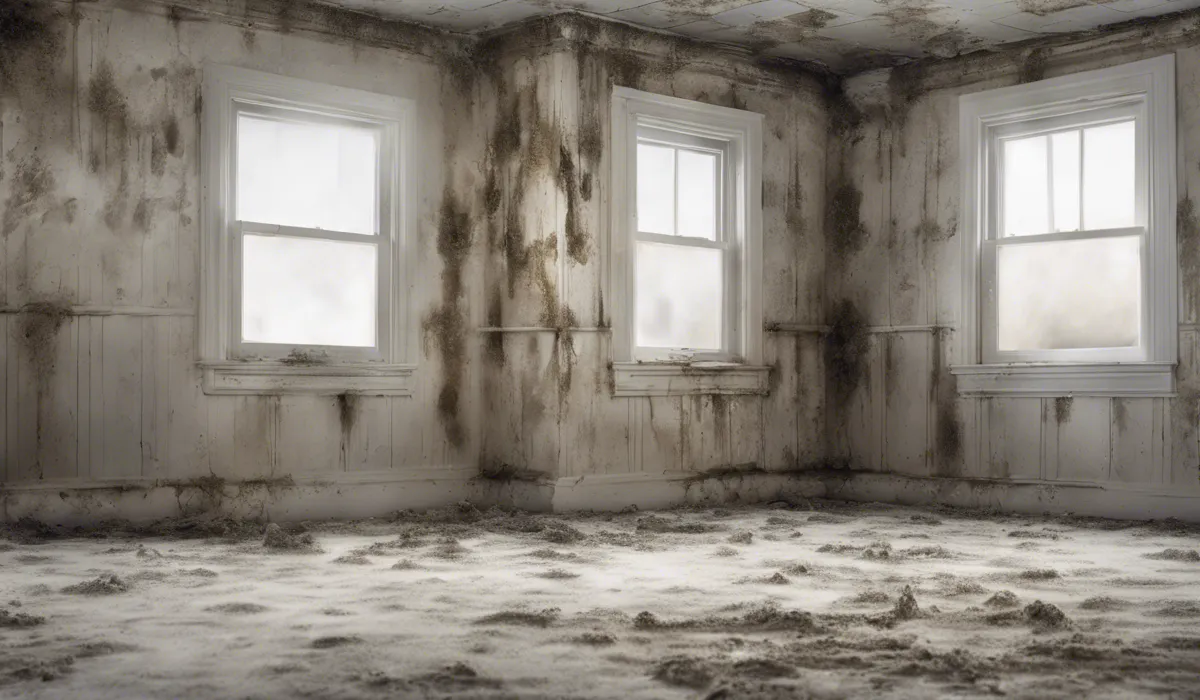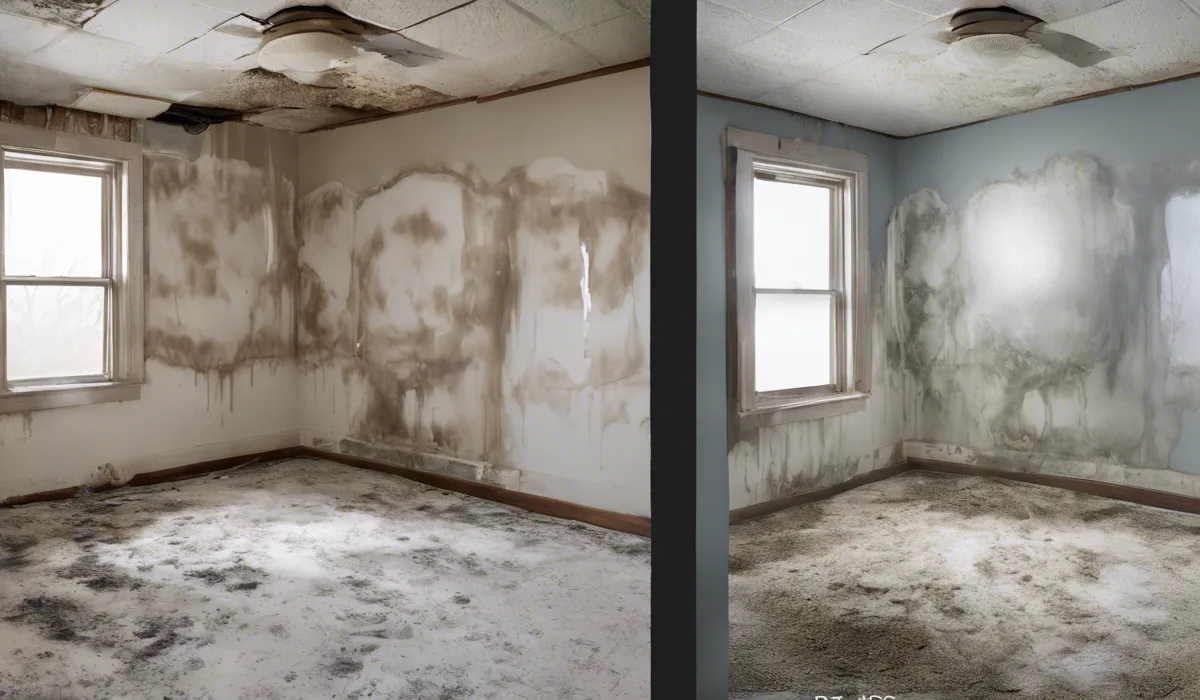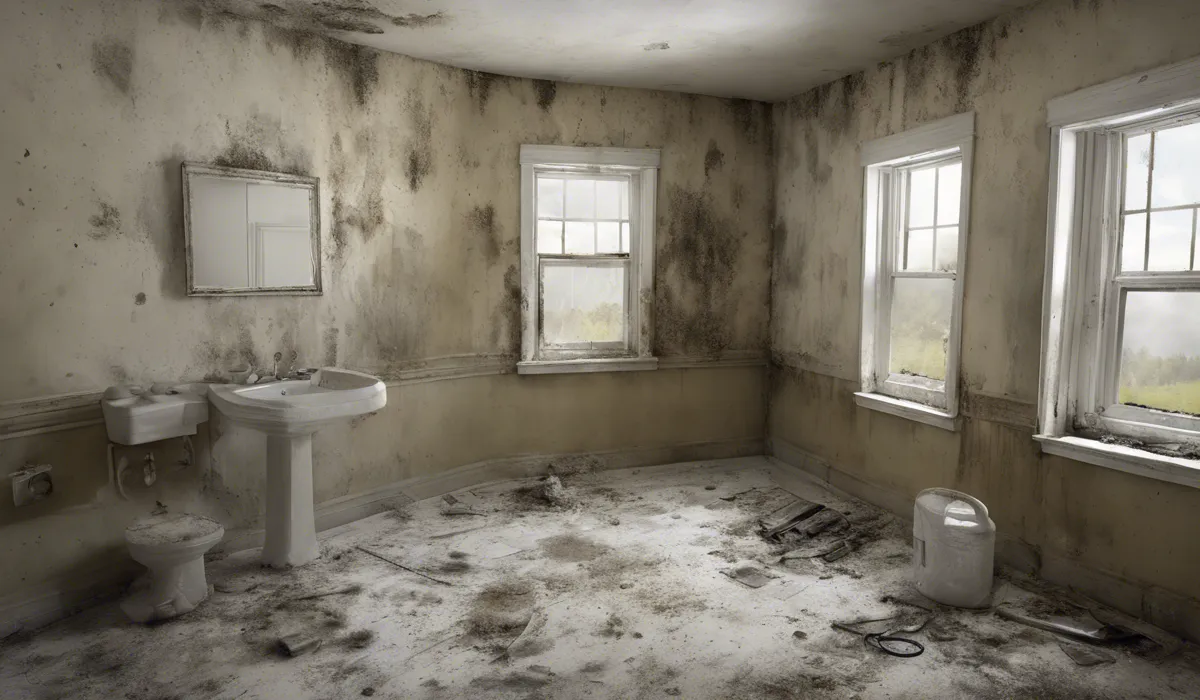Yes, you can do mold remediation yourself for small infestations using household cleaners and protective gear. However, large areas above 10 square feet should be handled by professionals due to health risks and complexity.
Understanding Mold and Its Risks

Definition of Mold and Its Common Types
Mold is a type of fungus that thrives in moist environments. It reproduces by releasing spores that can spread through the air.
Common types of mold found in homes include Aspergillus, Cladosporium, and Stachybotrys, often referred to as black mold.
Each type has different characteristics and growth patterns, but all require moisture and organic material to flourish.
Health Hazards Associated with Mold Exposure
Exposure to mold can lead to various health issues, especially for those with allergies or compromised immune systems.
Symptoms may include coughing, wheezing, throat irritation, and skin rashes. In some cases, exposure to toxic molds like black mold can cause more severe reactions, including respiratory infections or asthma exacerbation.
Conditions That Encourage Mold Growth
Mold growth is encouraged by damp, warm, and poorly ventilated conditions. Common household areas prone to mold include bathrooms, basements, and areas around leaks or flooding.
It’s crucial to control humidity levels, fix leaks, and ensure proper ventilation to prevent mold from taking hold.
Long-term Effects of Mold on Property and Health
Over time, mold can lead to structural damage to your property, including weakening of drywall and wooden supports.
Health-wise, long-term exposure can result in chronic respiratory conditions and other health issues. Addressing mold promptly can prevent these serious consequences.
Assessing the Scope of Mold Infestation

How to Identify Mold in Your Home?
Identifying mold involves looking for visible signs of growth, which can range from small spots to large colonies.
It is vital to check for musty odors and any areas with water damage or excessive moisture. Mold can often be found in hidden places such as behind wallpaper or in HVAC systems.
Tools and Equipment Needed for Mold Assessment
Assessing mold may require tools such as a flashlight, gloves, and a face mask.
More sophisticated equipment, like moisture meters or infrared cameras, can help identify hidden mold and moisture sources.
Understanding the Size and Severity of Mold Infestation
The size of the mold infestation impacts the approach to remediation. Small areas are typically manageable by homeowners, while large or deeply ingrained infestations often require professional intervention.
When to Call a Professional?
If the mold covers an area larger than 10 square feet or if you suspect the HVAC system is contaminated, it’s advisable to call a professional.
They have the training and equipment to safely and effectively handle extensive mold problems.
Steps for DIY Mold Remediation

Safety Precautions and Protective Gear
Before beginning mold removal, wear protective gear such as gloves, goggles, and an N-95 respirator to prevent mold spore inhalation.
Ensure the space is well-ventilated, and keep others away from the area during cleanup.
Isolating the Affected Area to Prevent Spore Spread
Isolate the area by sealing doors and vents with plastic sheeting and tape. This containment prevents mold spores from spreading to other parts of the home during the remediation process.
Cleaning and Disinfecting Moldy Surfaces: Products and Techniques
Clean moldy surfaces with a detergent solution, but avoid using bleach in concentrated forms as it can be hazardous.
Scrub the affected areas thoroughly and then dry completely. Porous materials like drywall may need to be discarded if they are heavily contaminated.
Necessary Repairs and Prevention of Future Mold Growth
After cleaning, repair any sources of moisture such as leaks. Use dehumidifiers and increase ventilation to maintain a dry environment.
Consider using mold-resistant paint and products to help prevent future growth.
Proper Disposal of Contaminated Materials
Place mold-contaminated materials in sealed plastic bags before disposal to prevent spores from escaping. Follow local regulations for the disposal of moldy materials.
Post-remediation: Ensuring Mold Has Been Effectively Removed
After cleanup, revisit the area to ensure mold has not returned. Use a moisture meter to confirm that the affected surfaces are dry.
Maintaining a dry environment is key to preventing mold from coming back.
FAQs About DIY Mold Remediation
Can I remove mold by myself?
Yes, you can remove small mold infestations by yourself using household cleaners and protective gear.
What safety gear do I need for DIY mold remediation?
For DIY mold remediation, you should wear protective gear such as gloves, goggles, and an N-95 respirator mask.
What household cleaners can I use for mold remediation?
You can use a mixture of water and detergent or a solution of water and white vinegar for mold remediation.
When should I call a professional for mold remediation?
You should call a professional for mold remediation if the affected area is larger than 10 square feet or if you have health concerns.
Are there any health risks involved in DIY mold remediation?
Yes, handling mold can cause respiratory issues and allergic reactions, which is why proper protective gear and caution are essential.
Final Thoughts
DIY mold remediation is feasible for minor mold issues using common household products and proper protective gear.
It’s important to limit this approach to small areas, ideally less than 10 square feet. For larger infestations, professional services are recommended due to the potential health hazards and the intricate nature of the remediation process.
